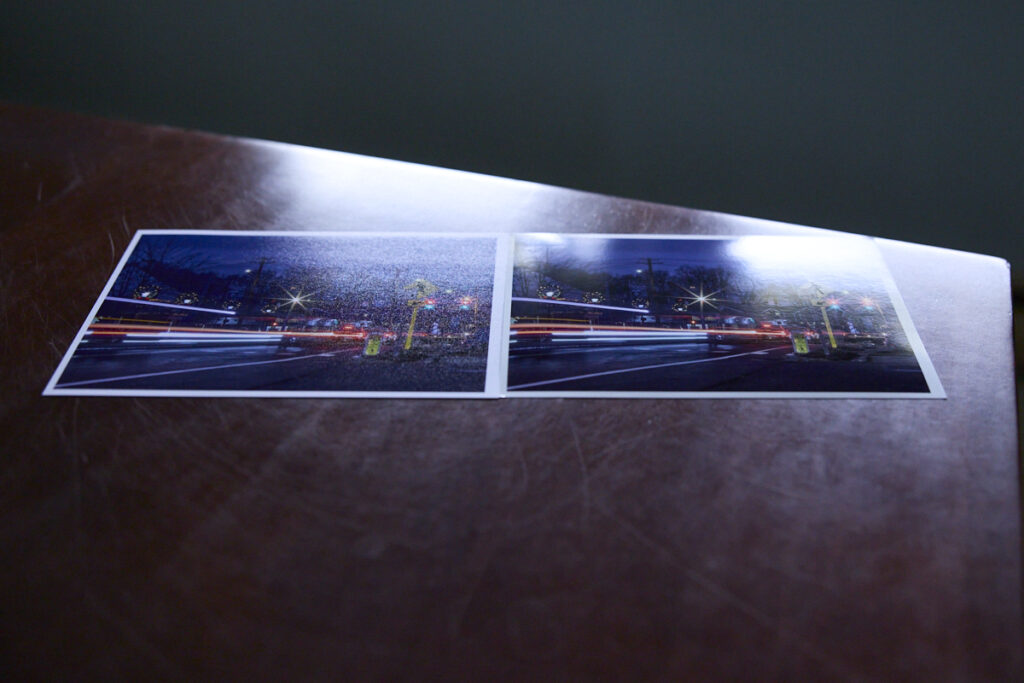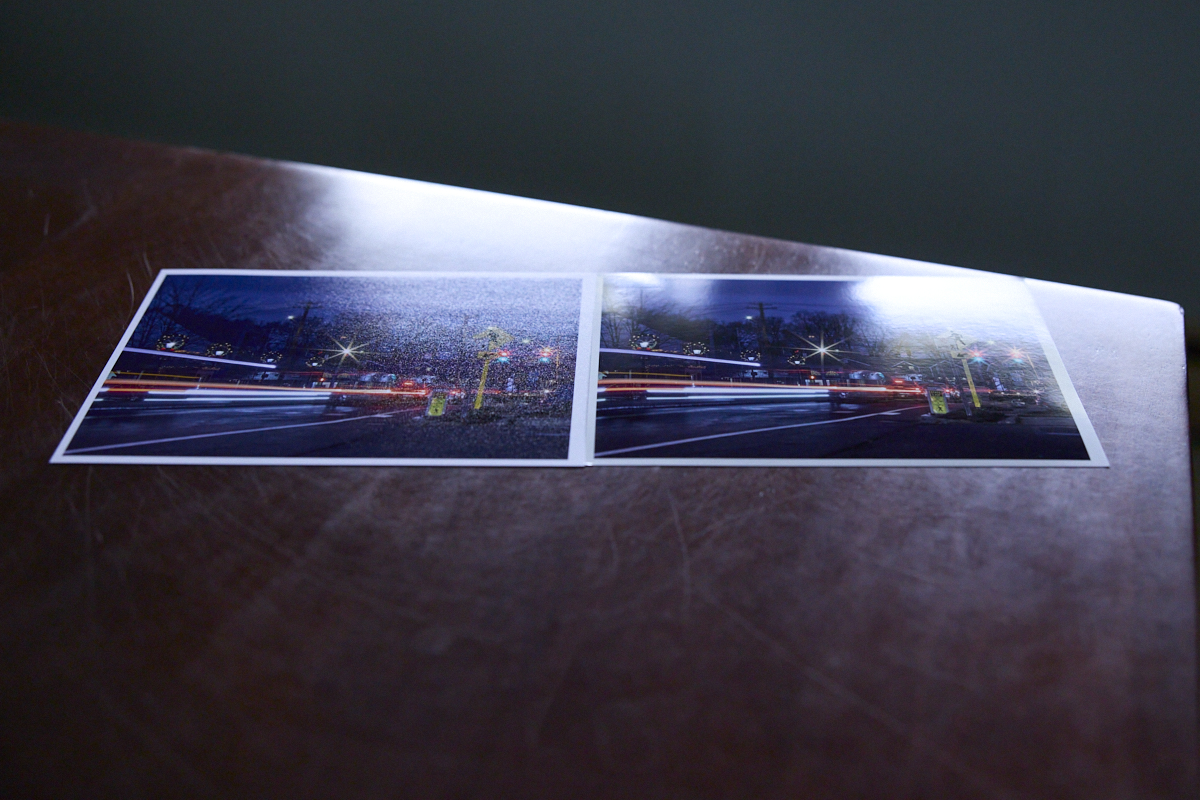Choosing the right photo paper is just as important as capturing the perfect shot. Different finishes impact how colors, details, and textures appear in a print. Whether you want the bold vibrancy of metallic, the balanced sheen of luster, the classic shine of glossy, or the soft elegance of matte, each paper type brings its own unique qualities to an image. Here’s a look at how they compare and when to use them.
Here are some differences of a few chosen paper finishes
Advantages of Luster Paper
- Reduced Glare & Fingerprints
The semi-gloss, textured surface reduces reflections, making it easier to view under different lighting conditions.
Resistant to fingerprints and smudges, making it great for handling. - Balanced Color & Contrast
Offers a good balance of color vibrancy and detail without the extreme shine of glossy paper.
Deep blacks and rich colors with a softer, more natural look. - Professional & Versatile Finish
Used in wedding photography, portraits, and high-end prints due to its refined, premium feel.
Works well for framing as it minimizes reflections compared to glossy. - Durable & Scratch-Resistant
The textured surface is more resistant to scratches than glossy paper.
Holds up better to frequent handling.
Disadvantages of Luster Paper
- Slightly Less Vibrant than Glossy
While colors are rich, they don’t “pop” as much as on glossy paper.
Not ideal for ultra-high-saturation images. - Texture May Affect Detail Perception
The micro-textured surface can slightly reduce sharpness compared to glossy.
Less ideal for extreme detail work.
Advantages of Glossy Paper
- Maximum Color Vibrancy & Sharpness
Best for rich, saturated colors and deep contrast.
Delivers sharp, crisp details, making it ideal for high-resolution images. - High Gloss Finish for a Sleek Look
The shiny, smooth surface enhances depth and makes colors pop.
Great for commercial prints, portfolio presentations, and consumer photo prints. - Ideal for Small Prints
Works well for photo albums, scrapbooks, and smaller prints, where glare is less of an issue.
Disadvantages of Glossy Paper- Highly Reflective & Prone to Glare
Can be difficult to view under bright lights due to strong reflections.
Not ideal for framing under glass. - Prone to Fingerprints & Smudges
The smooth, glossy surface easily picks up fingerprints and smudges.
Requires careful handling or framing to avoid marks. - More Susceptible to Scratches
Less durable than luster paper; scratches and scuffs are more visible.
Not ideal for frequent handling. - In larger framed prints the can stick to the glass.

Final Thoughts
Choose Luster if you want a professional look with reduced glare, durability, and a balance of color and contrast.
Choose Glossy if you want maximum color vibrancy, deep contrast, and a sleek, polished finish but are okay with reflections and fingerprints.
Matte paper
Advantages of Matte Paper- No Glare or Reflections
Matte paper has a non-reflective surface, making it ideal for prints that will be displayed under bright lights or behind glass.
Perfect for framed artwork, galleries, and portfolios. - Excellent for Text and Detail
The lack of gloss allows for sharp text and fine details to remain visible without reflections.
Often used for black & white photography, fine art prints, and photo books. - Fingerprint and Smudge Resistant
Unlike glossy paper, matte paper does not easily show fingerprints or smudges, making it great for handling.
Ideal for wedding albums, brochures, and prints that will be frequently touched. - Soft, Natural Color Rendition Produces subtle, muted tones with a natural feel, making it ideal for artistic prints.
Works well with portraits, landscapes, and artistic photography.
- Absorbs Ink Well
The surface absorbs ink effectively, reducing the chances of smudging or ink pooling.
Suitable for high-quality pigment and dye-based inks. - Can Be Written On Easily
Works well for business cards, invitations, or postcards, as ink from pens or markers adheres well to the surface.
Disadvantages of Matte Paper- Less Vibrant Colors
Because it absorbs more ink, colors can appear slightly less vibrant compared to glossy or luster paper.
Best for muted, soft-tone photography rather than high-contrast, saturated images. - Lower Contrast and Depth
The lack of shine can make deep blacks look more grayish, reducing overall contrast.
Not ideal for highly detailed, high-contrast images that require a punchy look. - Not as Water-Resistant
Matte paper absorbs moisture more than coated glossy or luster papers.
More prone to water damage, smudging, and fading over time if not properly stored or framed. - Can Show More Paper Texture
Matte paper has a slightly rougher texture compared to glossy or luster paper.
This can be a downside if you’re looking for super-smooth, high-detail prints, as the texture may slightly reduce the sharpness of fine details.
Final Thoughts
Matte paper is perfect for professional, artistic, and fine art prints where reflections, handling, and a soft look matter. However, if you need high color vibrancy, deep blacks, and gloss, other finishes like luster or glossy may be better suited.
MetallicMetallic paper is possibly the most eye-catching paper available. It has a high brightness value, excellent color vibrancy, and exceptional detail reproduction. This paper is ideal for landscapes and cityscapes but not always the best choice for portraits, as it can sometimes struggle with accurate skin tone representation. The surface is smooth like glossy paper but with less glare, making it easier to view under various lighting conditions. It’s a distinctive paper that provides depth, enhances contrast, and makes colors pop beautifully.
Advantages of Metallic Paper- Vibrant, High-Impact Colors
The metal-infused or pearlescent coating enhances color vibrancy, making reds, blues, and golds pop.
Works great for high-contrast images, HDR photography, and bold artistic prints. - Deep Blacks and Rich Contrast
Produces exceptional shadow detail and deep blacks, giving photos a three-dimensional appearance.
Great for black & white prints, night photography, and dramatic lighting effects. - Unique Metallic Sheen
The surface has a pearlescent or aluminum-like shimmer, creating a glossy, iridescent look.
Ideal for automotive photography, landscapes, and commercial prints that need a premium feel. - Resistant to Fingerprints & Scratches
More durable than glossy paper—its coating is more resistant to smudges, fingerprints, and minor scratches.
A great option for display prints, portfolios, or images that will be handled frequently. - Water-Resistant and Durable
Most metallic papers are resin-coated, offering better moisture resistance than matte or standard glossy paper.
Suitable for high-humidity environments or places with exposure to light handling.
Disadvantages of Metallic Paper- Can Be Too Reflective
Its high-gloss finish can create glare, making it less ideal for framed prints under direct lighting.
Not the best choice for subtle, muted photography styles where soft tones are needed. - Higher Cost
Metallic photo paper is more expensive than standard glossy, matte, or luster paper.
Not the best choice for bulk printing or budget-conscious projects. - Can Alter Image Appearance
The metallic sheen affects color perception, sometimes making skin tones look unnatural or overly intense.
Best suited for landscapes, vibrant scenes, and high-contrast images, rather than soft, natural portraits. - Not Ideal for Traditional Framing
If framed behind glass, the glare from metallic paper can compete with reflections from the glass.
Works best without glass or with anti-reflective acrylic framing. - Ink Compatibility
Some metallic papers are optimized for specific ink types (e.g., pigment vs. dye-based inks).
May require printer settings adjustments for optimal results.
Final Thoughts
Metallic paper is perfect for bold, high-impact images where vibrancy and contrast are key. However, it’s not ideal for subtle or traditional prints due to its high reflectivity and cost.
In Closing
For both photographers and clients, the choice of paper is more than just a finishing touch—it’s a creative decision that shapes the final impact of an image. Whether you’re printing a vibrant landscape, a timeless portrait, or a fine art piece, each paper type brings out something different. From the polished depth of metallic to the refined versatility of luster, the sleek vibrance of glossy, or the soft authenticity of matte, the right paper ensures your work is presented at its very best. Understanding these options helps you choose not just how a photo looks—but how it feels.

